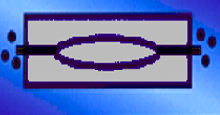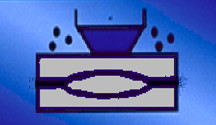To address this question we will assume that we are making a liquid tight seam weld. This applies to any thickness of material. Many of the conditions listed below are common to spot welding. In seam welding the welds overlap as the weld wheels roll forward. In a seam weld the process current is developed to allow for shunting current through the trailing welds which have already been made.


INTERFACE EXPULSION SURFACE EXPULSION
Either interface or surface expulsion can lead to burn through.
Any condition that could lead to excessive heat concentration is a suspect:
The first question would be are the seam welding wheels being dressed properly and kept in good condition? If the wheel face grows or becomes coated with oxides it can cause changes in current flow. Hot spots and or arcing may arise.
Is there adequate flood cooling on the wheels and product? If not properly cooled the weld wheel will wear rapidly and cause weld problems.
Does the work piece fit up well as the wheels progress over the length? Poor fit up causes the weld wheels to expend force to close gaps and not have sufficient force to make proper surface contact. The part will run hotter = maybe burn through.
Has the part been tack welded prior to seam welding? As the weld wheel approaches a tack weld a gap can form. There can be a ridge around the tack weld. Both conditions can lead to inconsistencies and possible burn through.
Is the part being welded clean or dirty? Surface conditions can lead to surface expulsion and burn through.
Is the weld force adequate? Low weld force leads to high surface resistance and high heat at the surface and expulsion.
Is the weld current too high?
Is the weld time too long?
Is the combination of current and weld time at the high end of the weld lobe and any slight change in conditions will tip it over the edge to expulsion and burn through.
In general the same conditions that cause expulsion in spot welding can also be a cause in seam welding.
References: RWMA – Resistance welding Manual, Revised 4th Edition

